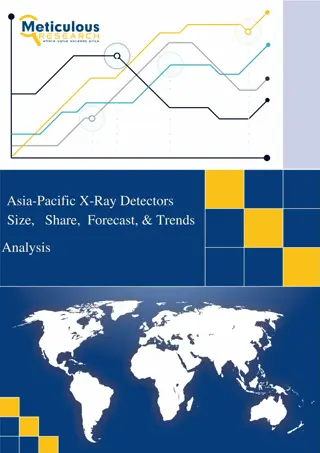Investigating Heavily Obscured AGN in the X-ray Background Epoch
R. Gilli and colleagues study heavily obscured AGN, particularly Compton-thick AGN, to understand their contribution to the missing X-ray background. They explore selection techniques, space density, and spectroscopic surveys to shed light on the evolution and characteristics of these elusive objects. The research suggests a significant presence of Compton-thick AGN, with implications for the broader understanding of the X-ray universe.
Uploaded on Sep 16, 2024 | 3 Views
Download Presentation

Please find below an Image/Link to download the presentation.
The content on the website is provided AS IS for your information and personal use only. It may not be sold, licensed, or shared on other websites without obtaining consent from the author.If you encounter any issues during the download, it is possible that the publisher has removed the file from their server.
You are allowed to download the files provided on this website for personal or commercial use, subject to the condition that they are used lawfully. All files are the property of their respective owners.
The content on the website is provided AS IS for your information and personal use only. It may not be sold, licensed, or shared on other websites without obtaining consent from the author.
E N D
Presentation Transcript
R. Gilli [Ne V]-selected heavily obscured AGN at the epoch of the X-ray background M. Mignoli C. Vignali A. Comastri G. Zamorani K. Iwasawa
Compton-thick AGN and the missing XRB classic argument: distant C-thick AGN needed to explain from ~10 to 30% of the 20 keV (Comastri+95, Gilli+07, Ballantyne+06, Treister+09) thin Their XLF and evolution essentially unknown: often assumed to be the same of less obscured AGN thick unobscured
When was the missing XRB emitted? Predicted peak at z~0.7-0.8
The multi- search for C-thick AGN Heavily obscured accretion mostly unconstrained beyond the local Universe Selection techniques: Hard (>10 keV) X-ray surveys (peak of X-ray spectrum) INTEGRAL/Swift, limited sensitivity only local Universe Deep X-ray surveys: X-ray reflected emission / flat spectra (e.g. CDFS-CDFN: Tozzi +06, Georgantopoulos +07,09) IR-surveys: reprocessed emission, heated dust (Polletta +06, Daddi+07; Fiore+08, Alexander+08, Bauer+09, Luo+11) Spectroscopic surveys: high-ionization emission lines like [OIII]5007 (Maiolino +98, Risaliti +99, Zakamska +03, Vignali +06,09, +many others) [OIV]26um (Spitzer/IRS, local Universe; Diamond-Stanic +09, Rigby +09) [NeV]3426 (this talk)
Space density of C-thick AGN Adapted from Vignali+10
Spectroscopic surveys: [O III]5007 is standard to select obscured AGN Composite spectrum of 30 SDSS QSO-2 at z=0.3-0.7 from Zakamska +03 [OIII]5007 X-ray observations of ~30 SDSS QSO2 show that ~50% have Lx/LOIII ratio a factor of >50 lower than expected candidate C-thick QSOs (Vignali+10) But only 3 out of 887 [O III]-selected QSO2s in the SDSS are at z>0.8
Spectroscopic surveys:[NeV]3426 selection [OIII]5007 [OII]3727 [NeV]3426 [NeV] cons *It is a factor of ~9 weaker than [OIII] and suffers from heavier extinction selects only objects with clean NLR [NeV] pros *unambiguous AGN marker (Eion >~0.1 keV) *visible from z~0.1 up to z~1.5, while [OIII] only up to z~0.8
X/NeV diagnostic ratio Calibration on a sample of 74 local Seyferts 80% of objects with X/NeV < 100 are heavily obscured, logNH>23 Essentially all objects with X/NeV < 15 are C-thick selection is clean but not complete See similar plots for [OIII] by Maiolino +98, Cappi +06, Panessa +06
Application to SDSS QSOs SDSS/XMM blue QSOs by (Young+09) C-thin QSO based on X/OIII ratio (Vignali+10) C-thick QSO based on X/OIII ratio (Vignali+10) 9 NeV-selected QSOs at z=0.85-1.30 observed with 10 ks ACIS-S each (Gilli+10)
A candidate [NeV]-selected C-thick QSOs = -1.2 EW > 0.7 keV L(2-10) obs. = 1044 erg/s Prominent Fe K line over a very hard continuum sign of Compton-reflection to be observed with 80ks XMM
The [OII]/[NeV] ratio in QSOs (Lx 1044erg/s) z>0.4 QSOs Evidence for enhanced star formation with increasing absorption in z>0.4 QSOs? (see also Kim+06) consistent with merger-driven evolutionary sequence
Extension to COSMOS COSMOS The 20k zCOSMOS-Bright catalogue includes 18141 galaxies and AGN with measured redshifts to IAB<22.5 (93% spectroscopic completeness). SDSS ~7400 galaxies with 0.65<z<1.20 all searched for [NeV] emission 94 [NeV]-selected type-2 AGN, 72 fall in the deep area covered by Chandra (up to 200ks exposure), median z ~ 0.9 (there are 60 type-1 AGN in zCOSMOS in the same redshift range)
Comparison with other AGN2-selections Composite spectra Diagnostic diagram (DD) at z<0.9 Type-2 AGN [NeV]-selected SF galaxies Only ~ 1/3 of [NeV] type-2 within the DD type-2 region, and only ~ 1/3 of DD-selected type-2 are [NeV] emitters. ~150 zCOSMOS optically normal galaxies with X-ray emission (AGN, logLx>42)
[NeV] & C-Thick AGN in zCOSMOS 23 NL-AGN detected by Chandra, 49 undetected. C-Thin C-Thick 9/72 candidates [X/NeV<15]. (13%) are good C-Thick 46/72 (64%) are obscured AGN (logNH>23) [X/NeV<100] but could be also Compton-Thick (X-rays upper limits) 13% < C-thick fraction < 53%
Next steps and developments Obtain new X-ray observations of [NeV]-selected SDSS QSO2s. Measure the space density of [NeV]-selected type-2 AGN in COSMOS, whole sample and C-thick candidates Assess completeness of [NeV]-selection vs other techniques (X-ray, DD, IR) Deeper observations than Chandra 200ks would be needed to improve limits on X/NeV and reliability of C-thick candidates: 4Ms CDFS, 2Ms CDFN, AEGIS are obvious fields to extend this technique






















